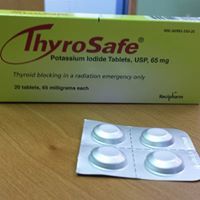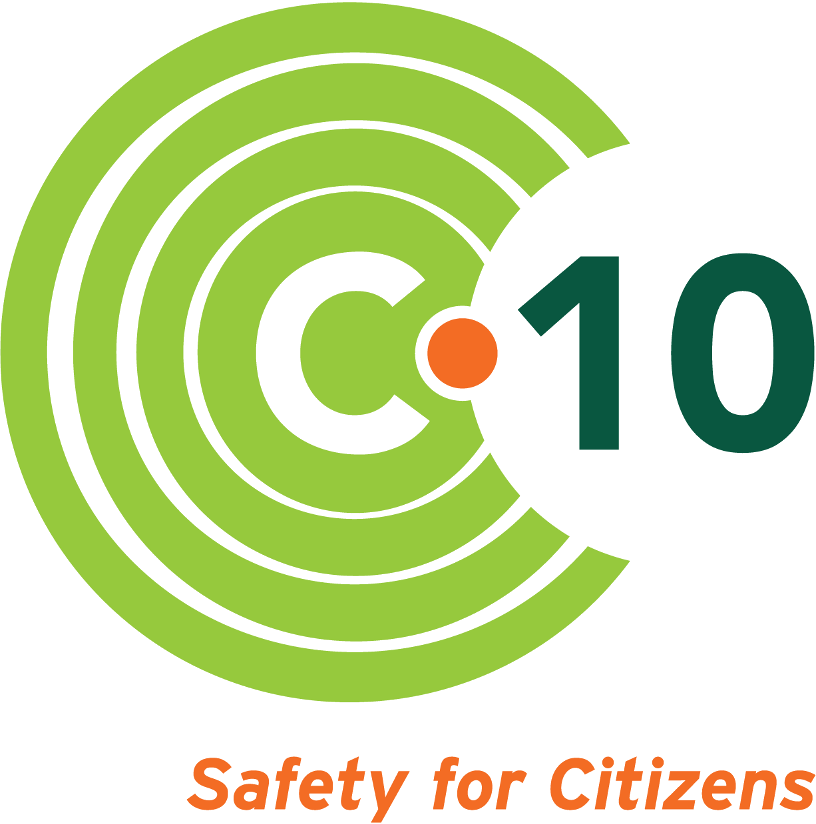Got KI?
- By Patricia Torkildson
- •
- 13 Mar, 2019
The government gives free tablets in case of nuclear emergency.

Seabrook Station, the nuclear power plant that sits on the New Hampshire salt marsh about seven miles from my home, has been granted a renewed operating license until 2050.
Though there are many people working to ensure that the unthinkable doesn’t happen, the possibility of a nuclear accident is a reality that Seabrook’s neighbors live with every day, like it or not.
The emergency calendar I recently received in the mail prompted me to do something I had been putting off: getting the potassium iodide tablets that I heard we’re supposed to take in the event of a significant radiation release at the plant.
So, on my walk home from the YWCA a few weeks ago, I decided to stop by Newburyport City Hall to get the tablets that I’d heard were available there for free. I asked the friendly person who greets everyone as they walk in where I could find the tablets. No luck there. She was very confused about what I was asking.
I headed to the basement because I had seen a sign for the Health Department down there when I had dropped off dead batteries for recycling. I found a person there who was speechless—not from what I was asking—but from a cold. She gave me four tablets, two each for my husband and me and a little brochure called Planning for a Seabrook Station Emergency.
I asked, “What would happen if I had guests over?” But I knew it was just a rhetorical question. The tablets are provided for residents only. When I asked when we were supposed to take the tablets, she pointed to the word “emergency” on the brochure. Actually, you should not take the tablets unless you are directed to do so by authorities when an event occurs.
The tablets, which are known as "KI,” are intended to reduce the risk of developing thyroid cancer when a person has been exposed to high levels of radioactive iodine. The level of risk from a release depends on the amount of radioactive iodine that has been released and the age of the affected individual. Infants and children under the age of 18 are most at risk due to their rapidly-dividing cells, and their risk increases the more radiation is released.
The risk for adults—particularly adults over the age of 40—is apparently lower. According to my research, adults over the age of 40 don’t need to take the tablets unless there is a very large release. But authorities may not know the size of a release and may simply advise everyone to take KI.
Anyone over the age of three can take the tablets whole or crushed, but those under the age of three must take the tablets crushed and mixed with a liquid. Parents are told to prepare the liquid ahead of time and keep it in the refrigerator. But it only keeps a week so you would have to do that weekly. Hmmm...
KI should be taken as soon as possible after you are told to take it so receiving prompt notice of a radiation emergency is essential. Anyone in the 10-mile emergency planning zone should sign up to receive notices of emergencies at this link. In the event of an emergency at the Seabrook Station nuclear power plant, you will be notified whether to evacuate or shelter in place and whether to take KI.
Residents in the 10-mile zone can get KI without charge. If you live in Massachusetts, you can get it from your local health department. In New Hampshire, the Radiological Health office of the Division of Public Health makes it available by application here.
Although KI is generally safe to take, it may cause adverse reactions in people with existing thyroid conditions and those who may be allergic to iodine or shellfish. Anyone in those categories should check with their doctor about the advisability of taking KI in an emergency.
Health departments in all the Massachusetts communities in the 10-mile radius have a supply of KI tablets available to residents, thanks to state and federal support. Though I know the risk of a nuclear disaster at Seabrook is small, going through this exercise was sobering. It made me very grateful that there is an organization such as C-10 looking out for the interests of everyone living near the plant. Through their network that monitors radiological emissions, research, and public education, C-10 makes living near a nuclear power plant a little less scary.
For more information and links about emergency planning and living near Seabrook Station, you can visit C-10’s Resources page.
Editor's note: C-10 is delighted that Pat Torkildson joined our board of directors in April 2019, after almost a year of serving as a volunteer. Welcome, Pat!

Follow us



